The secret history of the Titanic’s forgotten sister ship
Titanic's little sister
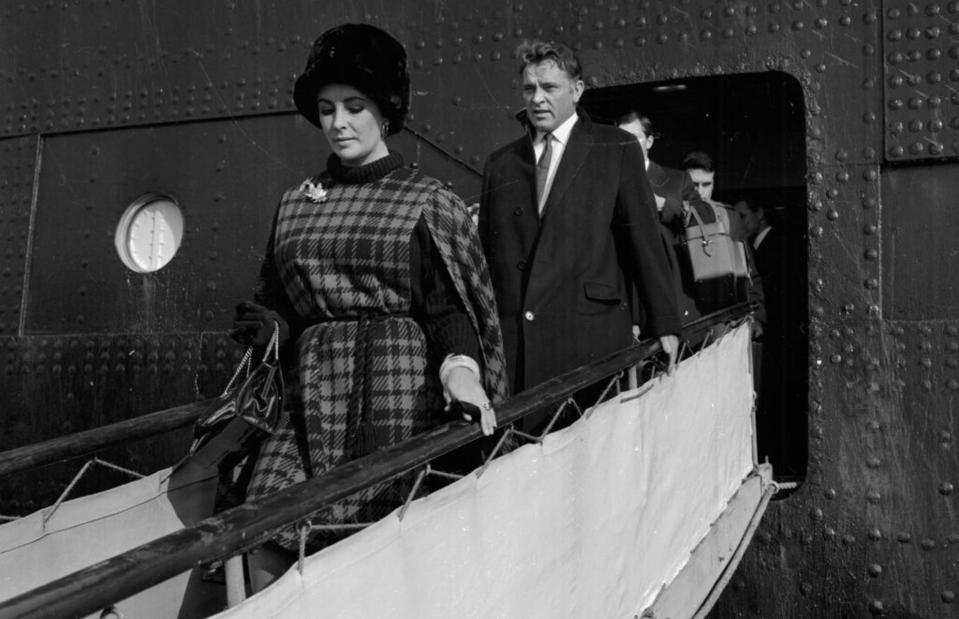
Woods/Express/Getty Images
The SS Nomadic – Titanic’s forgotten tiny sister ship – once used to ferry passengers and luggage to the doomed liner. Now it has been restored and is open to visitors at her home in Hamilton Dock at Titanic Belfast, Northern Ireland. Designed and built by the same team as the Titanic, the SS Nomadic is the last White Star Line vessel in the world. Read on to chart Nomadic’s fascinating story and take a peek inside Titanic’s smaller sibling.
The man behind the Nomadic
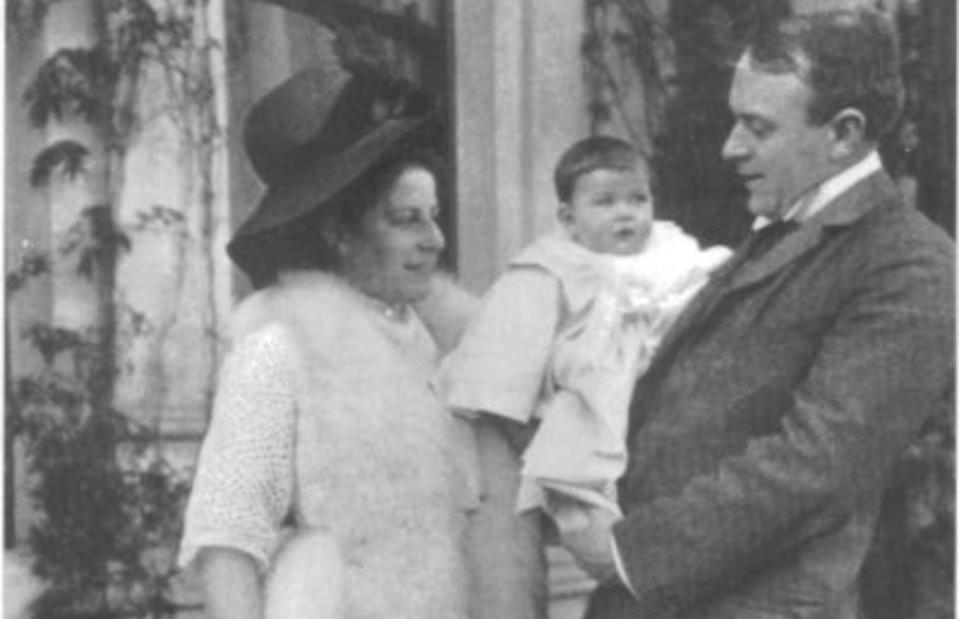
Public domain/via Wikimedia Commons
The Nomadic was designed by Thomas Andrews, the same naval architect who worked on the Titanic and the Olympic. Andrews was born in 1873 in County Down, Northern Ireland. Aged 16 he became an apprentice at Harland & Wolff shipyard and worked his way up to head ship designer. Andrews, pictured here in 1910 with his wife Helen and daughter Elizabeth, joined Olympic’s maiden voyage in June 1911 before travelling on Titanic’s first trip in April 1912, where he went down with the ship.
Building begins
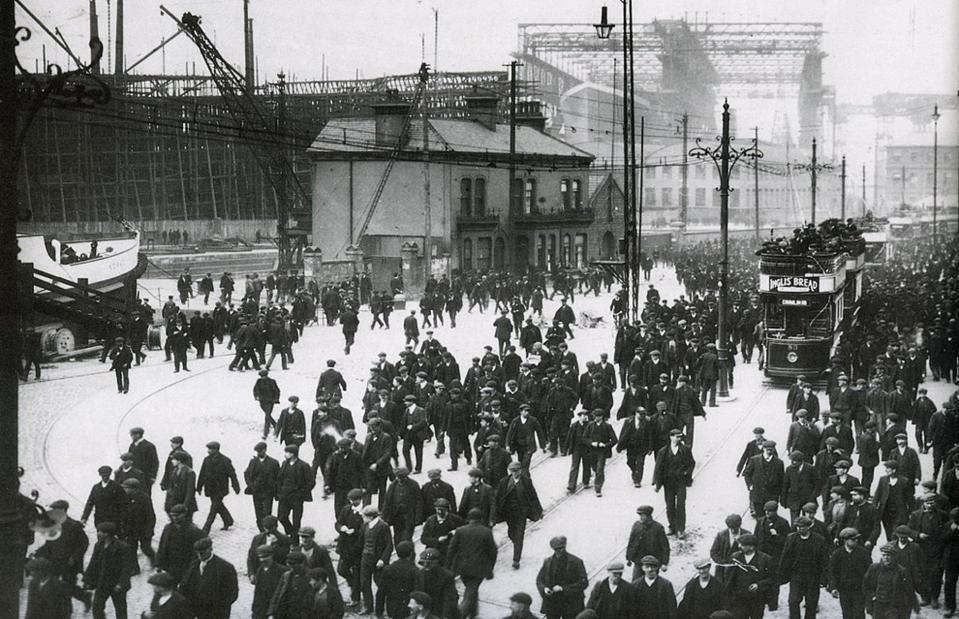
Public domain/via Wikimedia Commons
Ocean liners like the Titanic and her sister ship RMS Olympic were too big to enter small harbours like Cherbourg in France so they needed tender ships to ferry passengers and baggage between ship and shore. In 1910, the White Star Line commissioned two such tender ships: SS Traffic and SS Nomadic. Work started at Harland & Wolff shipyard in Belfast and in this 1911 photo we can see the bow of the Nomadic while under construction on Slipway 1 (to the left). The Titanic can be glimpsed in the background, on Slipway 3.
SS Traffic
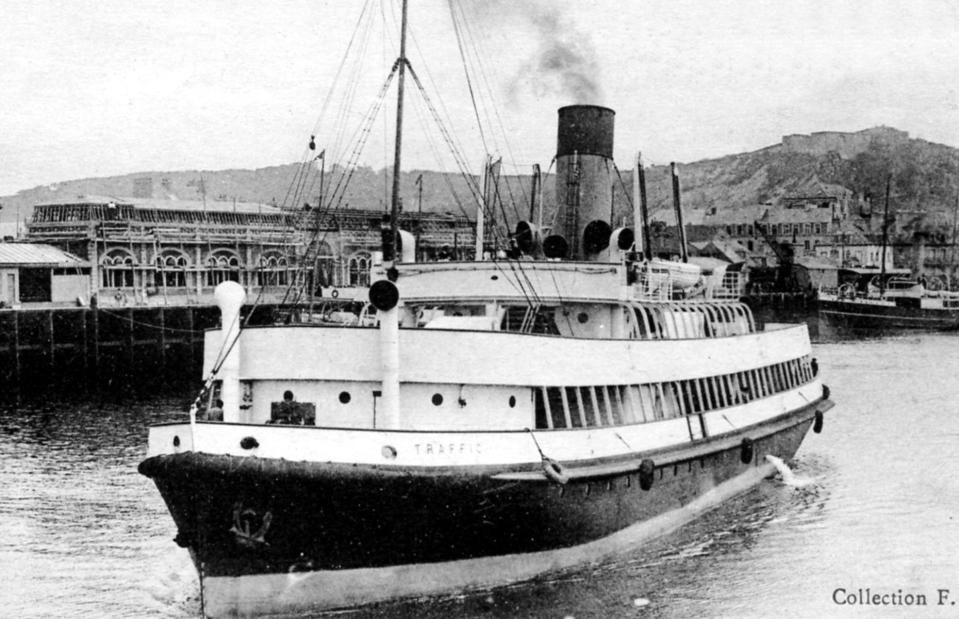
Public domain/via Wikimedia Commons
SS Traffic was the Nomadic's slightly less opulent sister ship and was designed to carry most of the third-class passengers plus baggage, local produce and mail. Measuring 187 feet (57m) by 33 feet (10m), the Traffic was powered by one steam boiler with three furnaces and could carry up to 1,200 passengers. Architect Andrews happily noted, in a letter to wife Elizabeth, that both tender ships performed a perfect ‘ballet’ as they ferried the passengers and goods from ship to shore.
Anatomy of a ship
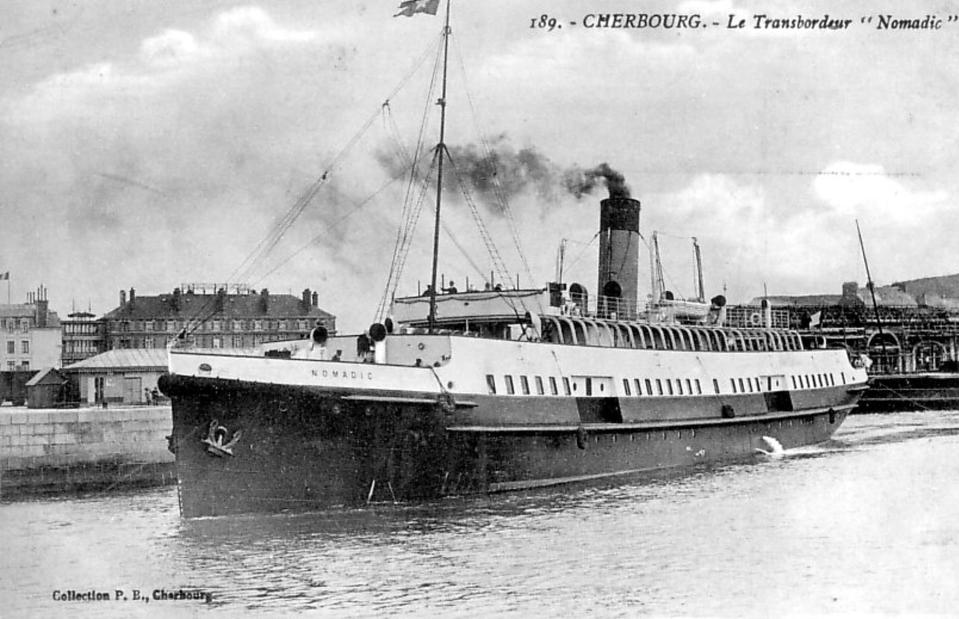
NomadicBelfast/Facebook
The Nomadic was 230 feet (70m) long and 36 feet (11m) wide and powered by four steam engines. She had four decks and could carry up to 1,000 passengers. Internally, she was luxuriously fitted out with ornamental work and plaster carvings, porcelain water fountains, cushioned bench seating and designated spaces for first-class and second-class passengers. She was also the first tender ship to have electric lighting. Andrews wanted Nomadic to be a smaller twin to the Titanic so passengers could maintain the same level of luxury throughout their journey.
Setting sail
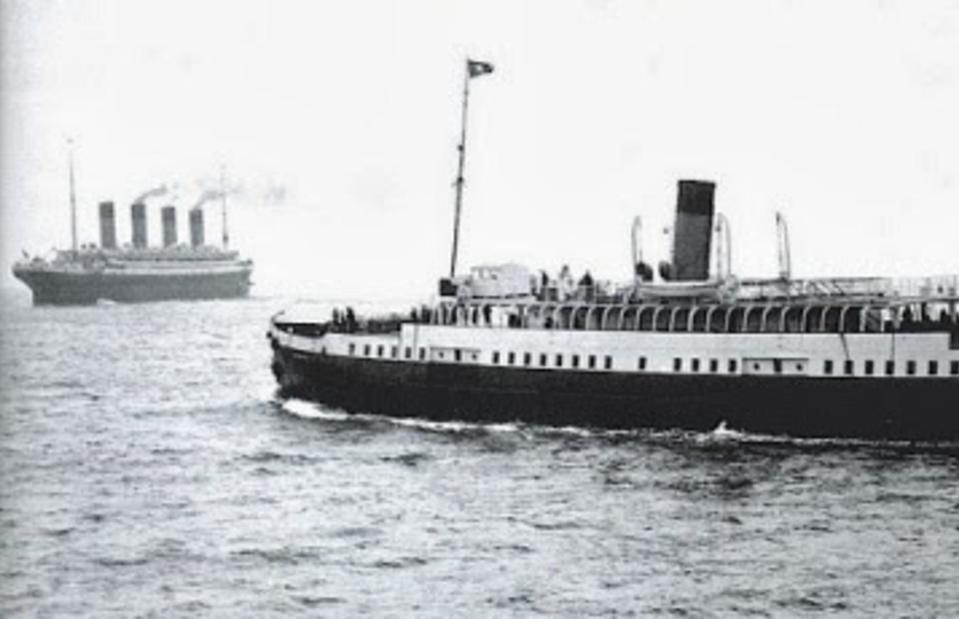
NomadicBelfast/Facebook
On 31 May 1911 the Nomadic, having completed her sea trials, left Belfast with the Olympic and fellow tender ship Traffic – on the same day as the Titanic left its slipway. The launches were deliberately coincided to draw maximum publicity and it worked. More than 100,000 people, including members of the public, VIP guests and journalists, gathered on the banks of the River Lagan to witness history being made.
SS Nomadic at Cherbourg
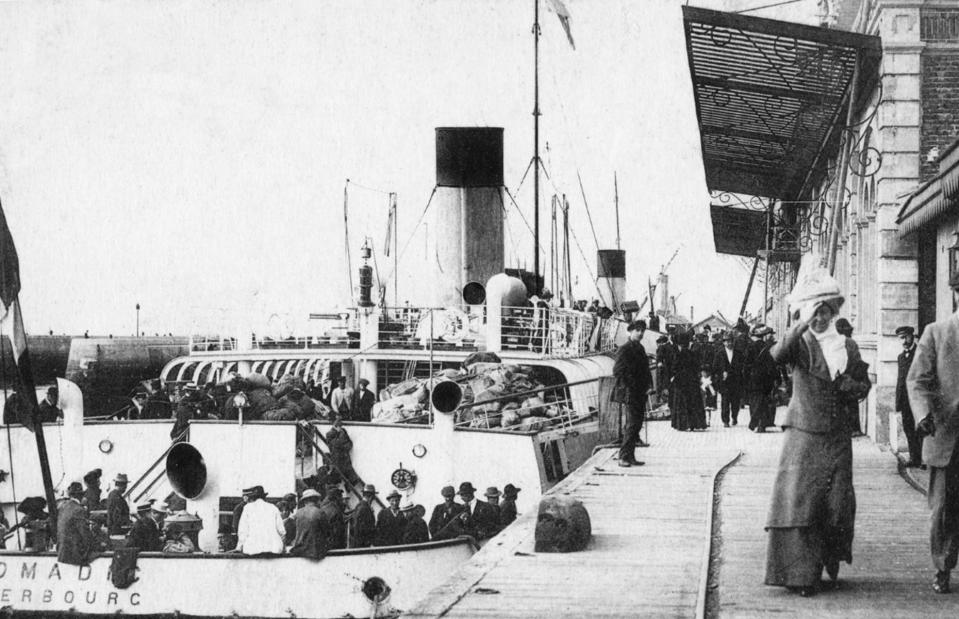
NomadicBelfast/Facebook
Having left Belfast, the Nomadic’s next home was the newly built port of Cherbourg, where she arrived on 3 June 1911 to begin her tendering duties for the White Star Line. As a result of her dual British and French nationality, the Nomadic had imperial draught mark measurements on one side of her hull and metric on the other. Here she is docked in Cherbourg taking on passengers. Under a French crew helmed by Captain Boitard, she initially transferred passengers onto the Olympic and then, in April 1912, moved 274 passengers onto the doomed Titanic.
Very important passengers
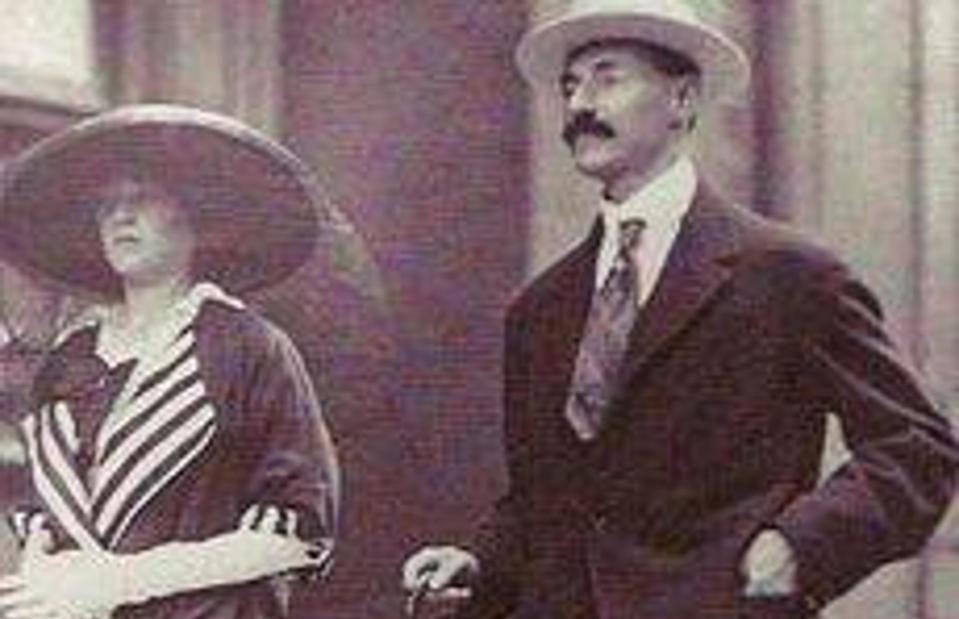
NomadicBelfast/Facebook
The Nomadic transferred many extremely rich and eminent passengers from Cherbourg to the Titanic. Among them were New York millionaire John Jacob Astor and his young pregnant wife, Madeleine. Astor had scandalously divorced his first wife Ava in 1909 and, at the age of 47, married the 18-year-old socialite Madeleine Talmage Force. One of the few people to remain friends with Astor was millionaire Margaret 'Molly' Brown, who accompanied the couple on the Titanic.
The Unsinkable Molly Brown
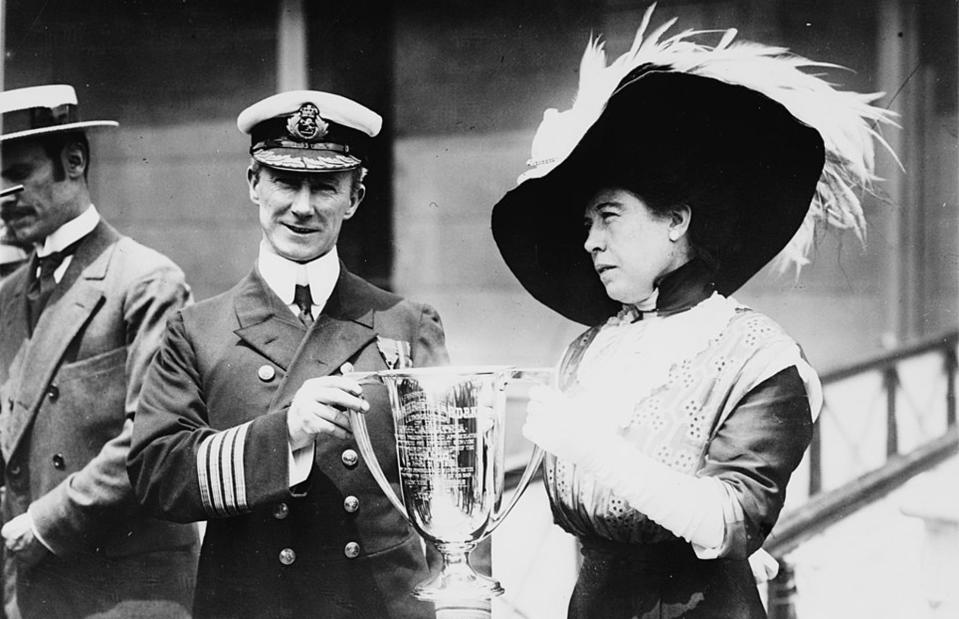
Public domain/via Library of Congress
While Astor died on the Titanic, his wife was saved – as was Molly Brown. Later known as ‘The Unsinkable Molly Brown’, she is seen here presenting a trophy to Captain Rostron of RMS Carpathia for his service in the rescue of Titanic passengers. Others onboard the ill-fated maiden voyage included wealthy American businessman Benjamin Guggenheim, who drowned, and British aristocrat Sir Cosmo Duff Gordon, who was saved via lifeboat with his wife Madame Lucille, a London fashion designer.
A story of survival
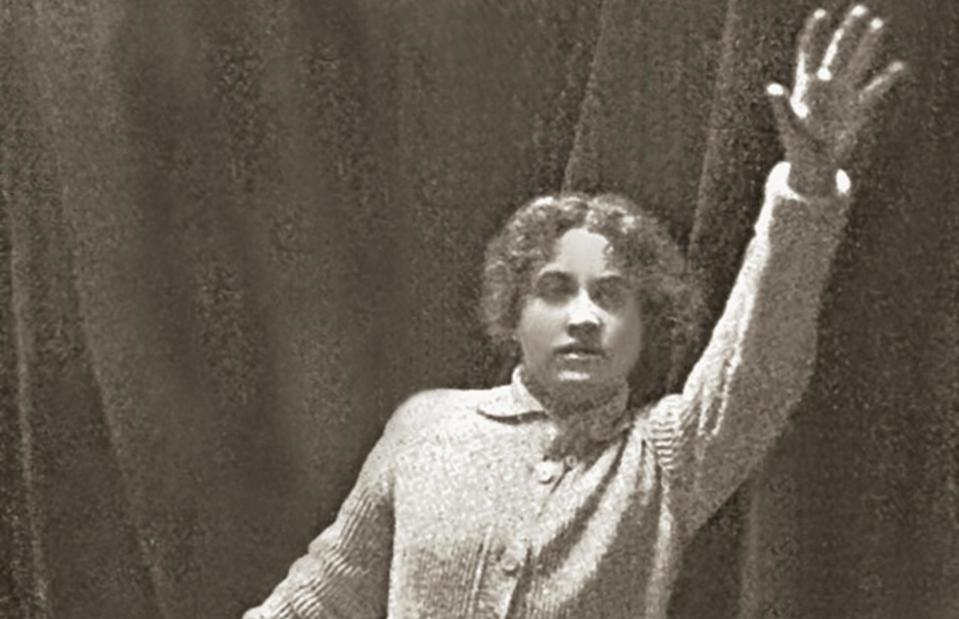
Eclair/public domain/via Wikimedia Commons
Dorothy Gibson was an American singer and actress holidaying in Europe in 1912. She and her mother booked tickets for the Titanic from Cherbourg and were transferred to the ship via Nomadic too. Gibson survived the sinking and just a month later appeared in a hit film called Saved From The Titanic playing herself. In this still from the film, she is wearing the same cardigan she wore on that fateful night.
A wartime hero
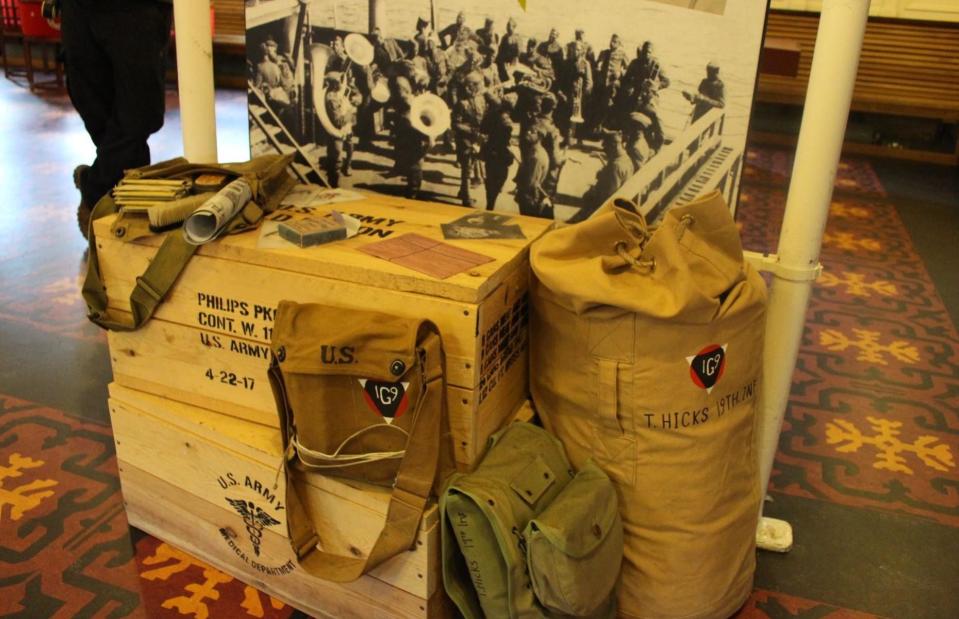
NomadicBelfast/Facebook
The Titanic's sinking didn't see the end of the Nomadic's story, however. When the First World War broke out, the French government requisitioned the Nomadic and transformed her into a minesweeper. She was transferred to the port of Saint-Nazaire and converted to an auxiliary minesweeper armed with four anti-submarine grenades and guns. Pictured is a Titanic Belfast exhibit on the Nomadic’s wartime role.
Troopship Leviathan
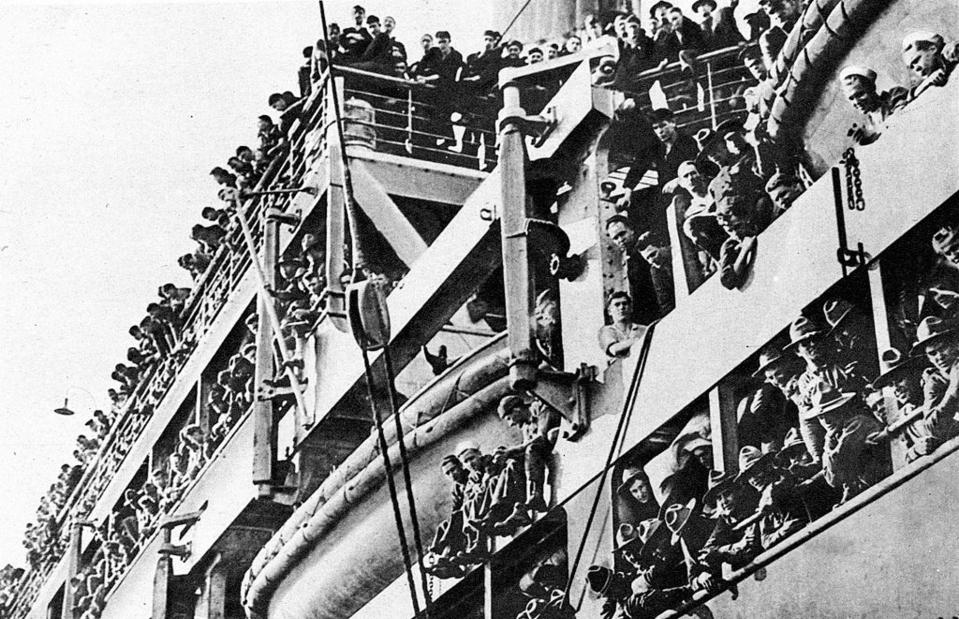
Photoquest/Getty Images
In 1918 thousands of American troops sailed across the ocean to join the war efforts in France. Here they’re aboard the SS Leviathan, from which they were transported to the French port of Brest on smaller ships including the Nomadic. The Nomadic continued work as a troopship until 1919 when she was let go by the French navy and then resumed her tendering duties in Cherbourg.
Marie Curie aboard the Olympic
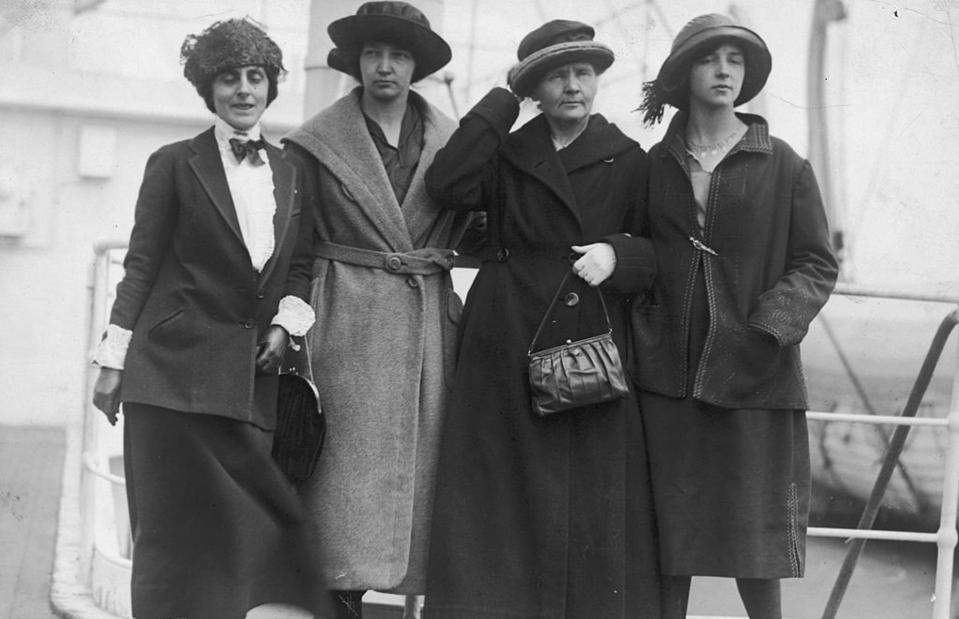
Bain News Service/Buyenlarge/Getty Images
In 1921, the Nomadic transported Marie Curie on to the Olympic from Cherbourg when the Polish physicist, chemist and double Nobel Prize winner embarked on a tour of the US to raise money for research into radium. Here she is (second from right) aboard the Olympic with her daughters, Irene and Eve, and Mrs William B. Meloney, chair of the Radium Fund Committee (far left).
A different name
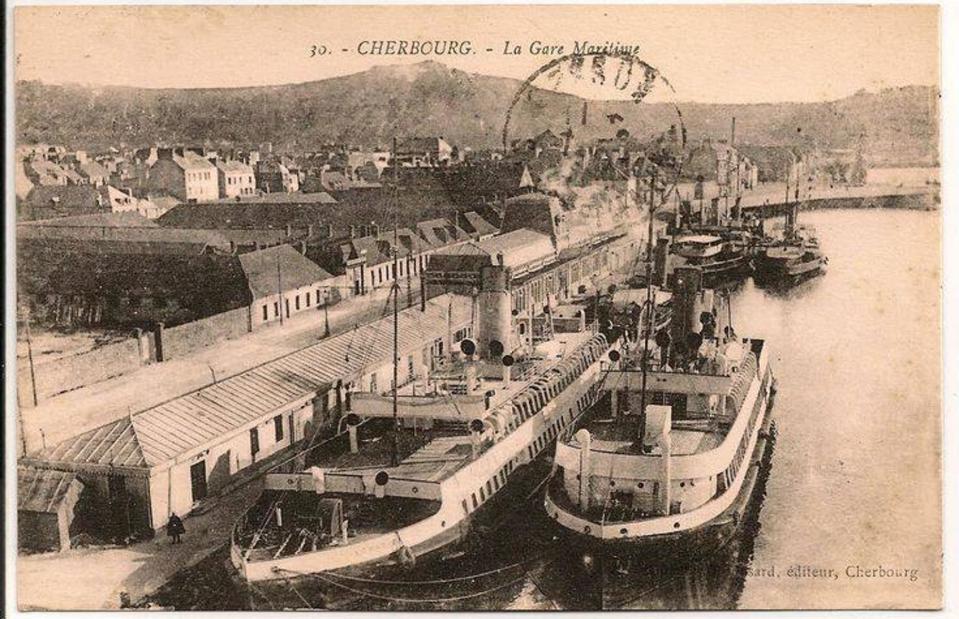
NomadicBelfast/Facebook
The White Star Line merged with Cunard in 1934 and the harbour at Cherbourg was enlarged so the big liners could enter, so the Nomadic was no longer needed as a tender ship. She was sold to the Cherbourg Tow and Rescue Society and renamed Ingénieur Minard, while her sister ship Traffic was renamed Ingénieur Riebell. The pair are pictured here in Cherbourg.
Once more unto the breach
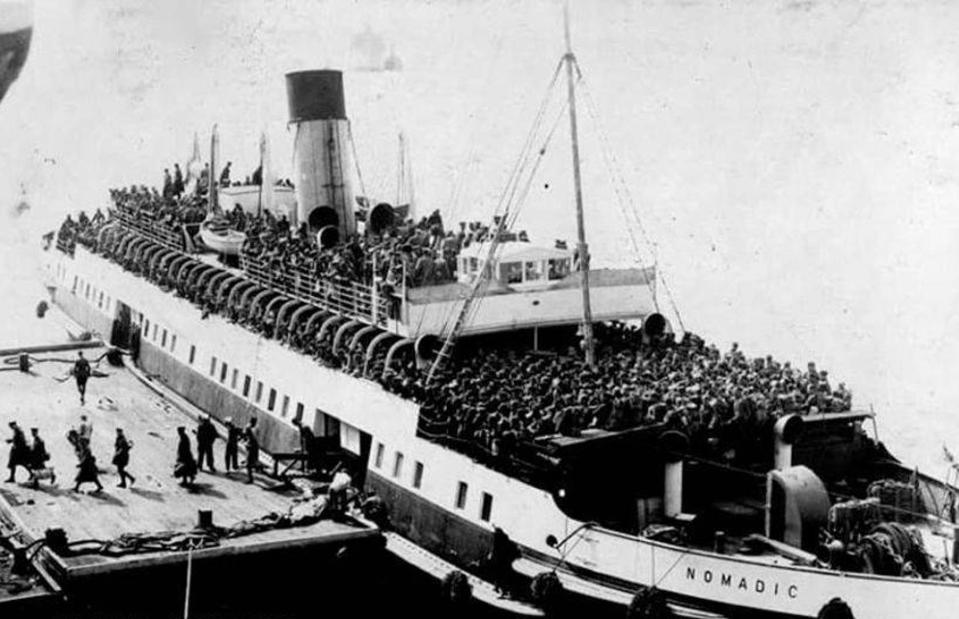
NomadicBelfast/Facebook
During the Second World War, the Nomadic was again put to work transporting troops. She helped in the evacuation of British troops and workers from Cherbourg in 1940 (pictured) and in 1945 ferried American troops to shore in Brest. After the war, she went back to tender duties as the port at Cherbourg had been damaged and could no longer accommodate the large liners. She now ferried passengers to ocean liners RMS Queen Mary and RMS Queen Elizabeth.
A new mistress
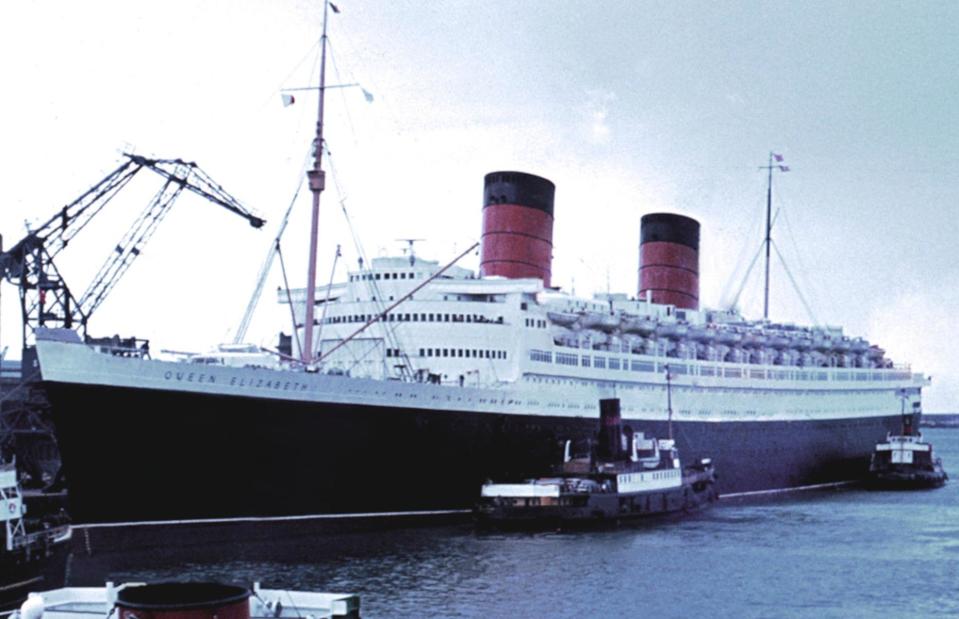
Roland Godefroy/Wikimedia Commons/CC BY 3.0
RMS Queen Elizabeth was named in honour of Queen Elizabeth, consort of George VI (and later the Queen Mother). The ship was launched in 1938 but the outbreak of the Second World War halted her planned trips across the Atlantic as a passenger liner. She was used as a troopship during the war and later began taking trips to New York. And, of course, it was the Nomadic that ferried passengers between the ocean liner and Cherbourg. Here Queen Elizabeth is pictured with two unidentified tenders alongside her in 1966.
Chaplin and family
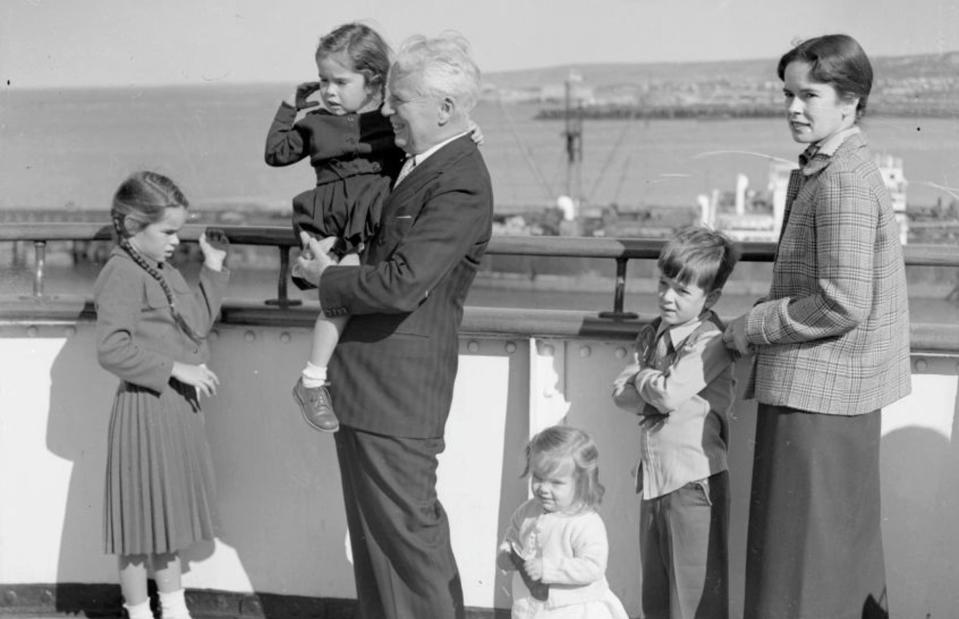
Walter Bellamy/Express/Getty Images
In 1952, Charlie Chaplin travelled to London for the premiere of his film Limelight with his wife Oona and their children. They crossed the Atlantic from the USA on the RMS Queen Elizabeth and arrived in Cherbourg, where they were transferred to the port via the Nomadic. When the British actor and filmmaker tried to return to the US, he was barred from entry for his left-wing political views. He and his family later settled in Switzerland.
Golden couple
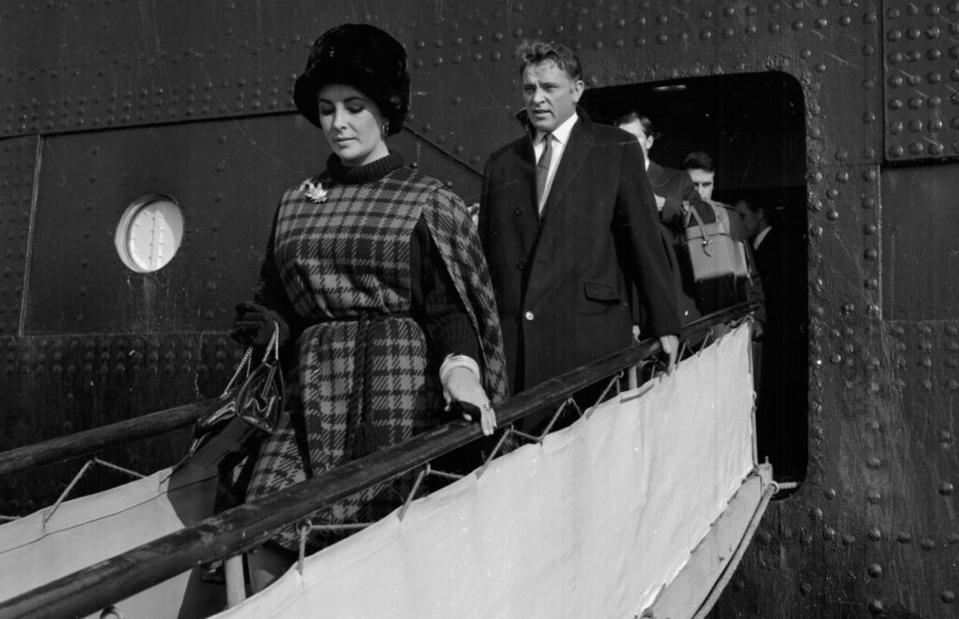
Woods/Express/Getty Images
British-American actor Elizabeth Taylor met Welsh-born Richard Burton during the filming of the epic movie Cleopatra in 1963. The affair that began between the married co-stars caused a scandal and they later divorced their respective spouses and married each other in Montreal in March 1964. Here, the couple is shown leaving the RMS Queen Elizabeth via Nomadic on a trip to France.
Career change

NomadicBelfast/Facebook
In 1969 the Nomadic (then still known as Ingénieur Minard) completed her work as a tender ship and was sold to Frenchman Roland Spinnewyn, who planned to open a restaurant onboard. He failed in the venture and sold the ship to entrepreneur Yvon Vincent, who changed her name back to Nomadic and moored her on the Seine in Paris as a restaurant and events centre. The restaurant served as a luxurious dining establishment until closing in 1999 due to concerns about the ship’s condition.
Nomadic in the 21st century
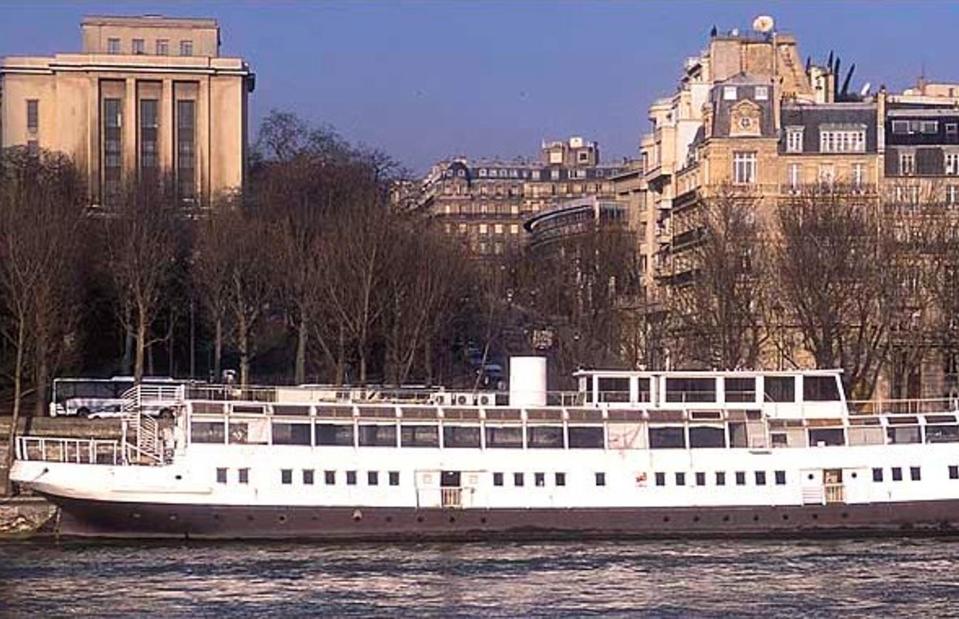
Anthony Atkielski/Wikimedia Commons/CC-BY-SA-3.0
By 2000 the Nomadic was still moored on the Seine in Paris but was now abandoned. She was missing her two top decks and many of the original features and portholes had been removed. Cold and damp had started to take hold and she was sadly in need of refurbishment. In 2006, Nomadic was purchased by the Department of Social Development and transported back home to Belfast on a submersible barge.
Back in Belfast

shawnwil23/Shutterstock
Hamilton Dock in Belfast had been unused since the 1990s but was refurbished as part of the new Titanic Belfast experience. The Nomadic found a home there in 2009 and, the following year, the Special European Union Programme's Agency and the Northern Ireland Tourist Board provided funding for the ship to be restored to her former glory. The contract to do this was awarded, appropriately, to the Harland & Wolff shipyard and the Nomadic was opened to the public in 2013.
A peek onboard
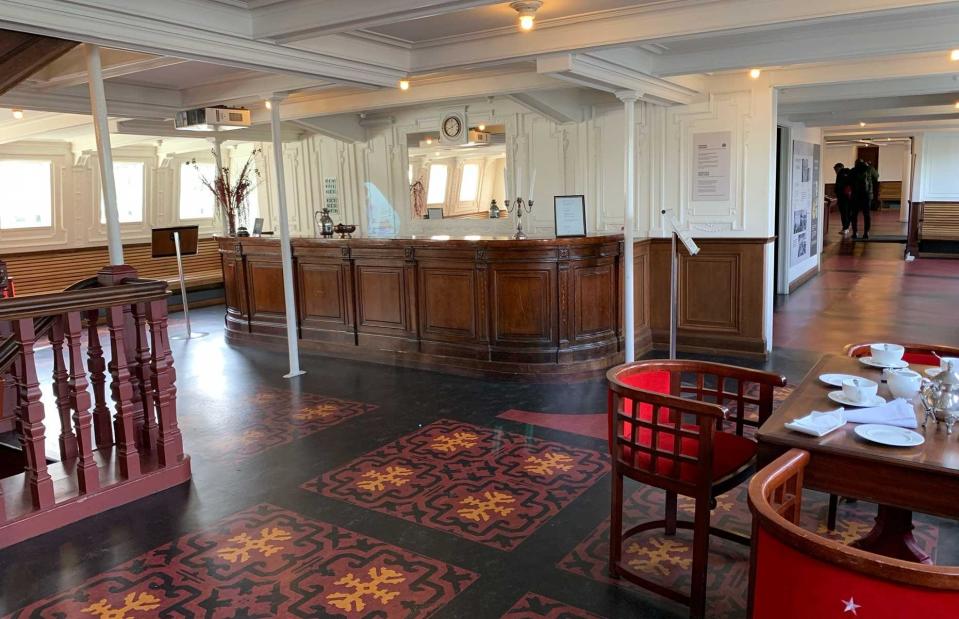
Laura Jackson/loveEXPLORING.com
It took seven years and around £10 million ($13.6m) for Nomadic to be restored to her original 1911 glory. The wooden panelling, portholes and even the ceramics were replaced. The original Harland & Wolff designs were used to make the restoration as authentic as possible. The flooring in this photograph is the same pattern used in the first class dining room on the Titanic.
All decked out
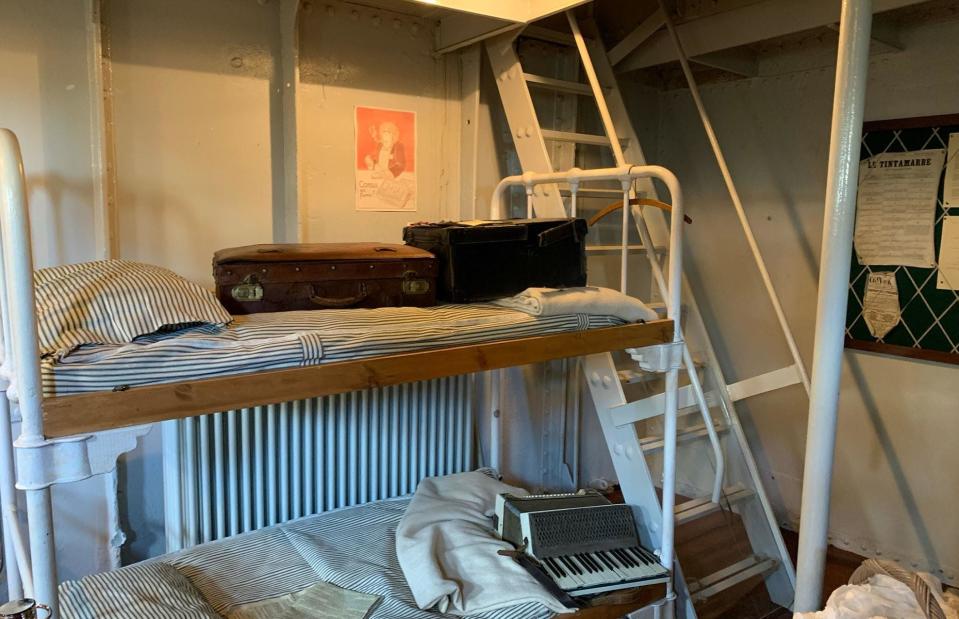
Laura Jackson/loveEXPLORING.com
Visitors can now explore all four decks of Nomadic, walk through interactive exhibitions and learn about life onboard. A visit to the crew's sleeping quarters shows even the linen and luggage that would have been used at the time. Visitors can also experience the stark contrast between the luxury of first-class travel and the spartan conditions endured by the crew and third-class passengers. Visiting the Nomadic is the closest anyone can get to actually being on the Titanic.
Unlock the secrets of Titanic at these amazing museums around the world


